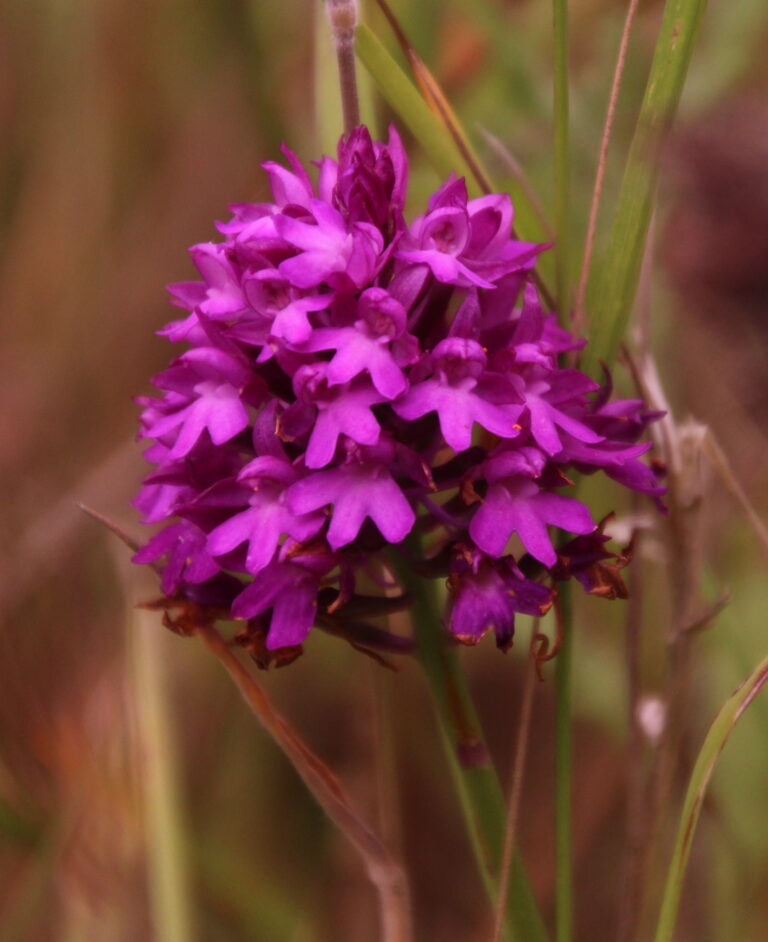The Friends of Last Wood and meadow group is working to conserve and protect this fantastic Seaford site.
The “Last Wood and Meadow” is a local green space owned by Lewes District Council on the edge of the South Downs in East Sussex. It’s also known as “The Chalky” by generations of Seaford children who enjoy this wild space, and by some as the “Marbled meadow” due to the high population of Marbled white butterflies that appear in the Summer!
Where is it?
The “Last Wood & Meadow” is an area of open space on the northeastern edge of Seaford in East Sussex.It covers approximately 9.7 acres (about 3.9ha) at central grid reference TQ 501004. The site falls entirely within the South Downs National Park (SDNP) and was designated a Local Green Space (LGS) in the Seaford Neighbourhood Plan which gives this special place the same level of protection from development as greenbelt land.
Last Wood and Meadow adjoins the northern extension of Seaford Cemetery and Alfriston Road with a large arable field to the northwest and a bridleway along its northeastern edge.
There are several pedestrian access points onto the land from the Alfriston Road and from the farmland to the north west. The nearest public transport is the 12A bus which stops nearby.
Why is this site so important for wildlife?
Many local people visit this easily accessible site that is rich in wildlife. This space contains a mixture of grassland, scrub and woodland areas with patches of bare ground. Its high value to wildlife is largely due to this mosaic of different habitats.
The Meadow has an abundance of pollen- and nectar-rich plants as well as undisturbed areas of vegetation. This combination makes it an especially valuable place for invertebrates such as butterflies, bees, hoverflies, moths, beetles and spiders.
The scrubby habitats are rich in blossom and fruit. These areas are also important for invertebrates and other types of native fauna including small mammals, birds and reptiles.
Last Wood, with its old flint wall boundary, has a mixture of trees and shrubs with some large, old trees that could be home to roosting bats and hole nesting birds.
The Management Plan
In 2020 a detailed five-year management plan by Dolphin Ecological Survey recommended ways to manage the habitats to enhance Last Wood and Meadow for its wildlife and for the people who visit it.
The grassland, scrub etc has been well managed in accordance with the plan over the last 4 years by Becky Fuller and LDC in conjunction with Bob Eade and Kate Ryland.
Neighbourhood First have also done a great job with clearing litter and are trying to make contact with the young people who use the bike tracks.
Some of the proposed infrastructure changes would need funding e.g. interpretative signs, fences, gates, dog bins etc. This would help protect the site and give it a clear identity and definition.
The group understand the importance of balancing the needs and activities of the different groups of people using the space (i.e. nature lovers, a wild place for children to meet and play, BMX bikers and dog walkers).
The aims of the group include:
Formalise the group to take the plan to the next stage and investigate funding options for the recommended infrastructure to protect and improve the site
To monitor progress of meeting the aims of the Management Plan – i.e. to ensure the site remains a haven for wildlife and continues to be a treasured place for local people to enjoy.
Encourage people to record and report species – for example using INaturalist or directly to the Sussex Biodiversity Record Centre.
Consult with local residents and visitors of the site to resolve specific problems such as anti-social behaviour, damage to habitats and fly tipping, or to consult where changes are planned such as fencing and signs.
Encourage and support groups to run suitable events at the site that make the most of the biodiversity on the site. For example running nature observation events or wellbeing walks.
How can I get involved?
Visit the site, record what you see, and share your records, so that there are comprehensive species lists for the site.
The group welcome all volunteers, please get in touch if you would like to get involved or find out more. We currently have several vacancies on the formal committee, please get in touch if you would like to help.
Contact details:
Email address to be confirmed (please contact info@renaturingseaford.org and we will forward your email)
Facebook https://www.facebook.com/groups/2876181985757802







SNHS event – 31 May 2025 – Orchids in Last wood
Join Seaford Natural History Society on a gentle walk round this special nature reserve Many residents of Seaford are not...
Read MoreLast Wood and meadow signboards on their way!
Funding is now in place for new signboards at the Last Wood and meadow site! The Friends of Last Wood...
Read MoreExploring Last Wood with SNHS- 28 September 2024
Twelve people were tempted out by the unexpectedly nice weather, including one child, two Town Councillors and a number of...
Read MorePyramidal orchid (Anacamptis pyramidalis)
Pyramidal orchid Common name : Pyramidal orchid Latin name : Anacamptis pyramidalis A member of the Orchid family (Orchidaceae) A...
Read MoreExploring Last wood and meadow
Seaford Natural History Society (SNHS)and On the Verge invite you to a walk through the Last Wood and meadow Many...
Read MoreGreenhavens Network – August update
We at Greenhavens have had a fantastic summer where we have been enjoying the wonderful green spaces around us. Local...
Read MoreButterflies and moths
Butterflies.. ..are some of our most familiar and beautiful pollinators. Some appear regularly to delight us in our parks and...
Read More









